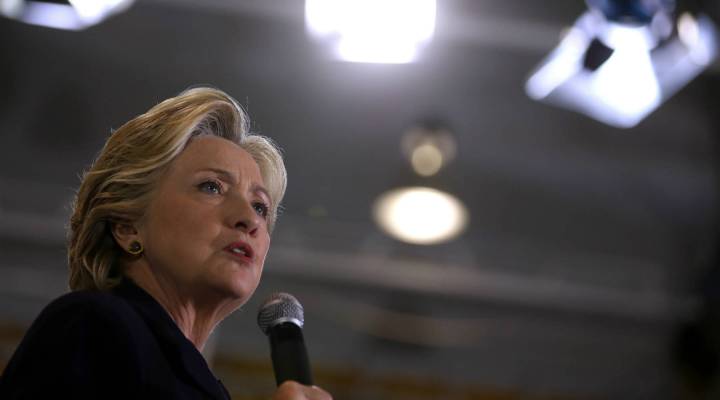
Election shows weakened labor support for the Democratic Party
Election shows weakened labor support for the Democratic Party

A key element of the Democratic Party’s game plan to elect Hillary Clinton and achieve a majority in the Senate — mobilizing union voters — proved weaker than expected in the 2016 election.
Donald Trump promised during the campaign that he would buck history and win the union vote for Republicans. In the end, he didn’t win a majority among union households nationwide. But he did cut into President Barack Obama’s margin with union households, helping Republicans to flip crucial swing-states in their favor — including Ohio, Pennsylvania, Wisconsin and Michigan.
Organized labor’s get-out-the-vote effort this year was every bit as robust in 2016 as in previous recent elections, said Peter Olney, former organizing director for the International Longshore and Warehouse Union, who advised several national unions on electoral efforts this year.
“Labor put its shoulder to the wheel and worked hard to elect Clinton,” Olney said. “The AFL-CIO put together a very strong ground game.”
That included extensive communications to members explaining the federation’s endorsement of the Democratic ticket. Individual unions mobilized tens of thousands of volunteers nationwide for phone banking and door-to-door canvassing aimed at fellow union members, friends and family, and the general public.
Still, said Olney, “labor was not able to convince its members — in the significant ways it had done for Obama — to vote for the Democratic nominee. And that’s particularly true in the hard-hit Rust Belt states like Ohio, Pennsylvania and Wisconsin.”
Exit polls from Edison Research and CNN show that Hillary Clinton won union households nationwide — by 51 percent to 43 percent. She won union households by even larger margins in Michigan (53 percent to 40 percent) and Wisconsin (53 percent to 43 percent), though she lost that vote to Trump in Ohio (by 42 percent to 54 percent).
In 2008 and 2012, Obama won union households by nearly 60 percent, according to exit polls. Trump, meanwhile, improved on the performance of his recent Republican predecessors. His 43 percent share of union households beat the union vote gained by George W. Bush, John McCain and Mitt Romney.
Olney said a more progressive Democratic message from the Clinton-Kaine ticket — including more aggressive attacks on Wall Street and free trade — would have cut into Trump’s appeal with union voters.
Jan Soltys, a former UAW autoworker at a Chrysler plant in Northern Illinois, agreed.
“I’m angry, just like everybody else,” Soltys said. “I’m still hurting from the recession. You hear about everything being great — it’s really not for everybody.”
Soltys supported Bernie Sanders in the primaries, and didn’t support either major-party candidate in the general election. She said a lot of union autoworkers she knows bucked the UAW’s endorsement of Hillary Clinton and backed Trump. She said even though Obama rescued the auto industry, many UAW workers experienced pay and benefit cuts.
“It’s symbolic of this whole new economy,” she said. “Even if you’re at Chrysler — you work twice as hard at what was once a really good job, and you aren’t going to make the same money as the people before you.”
That’s just the kind of blue-collar backsliding that Trump promised to fix as he went after traditionally Democratic voters in the election.
Economist Michael Strain at the conservative American Enterprise Institute said Democrats must now be asking themselves “whether the traditional coalition and traditional allies — of which labor unions were a huge part — came through and are enough” to achieve victory in national elections. And Strain said Democrats’ problem is heightened by the precipitous decline of union membership in recent decades.
But Lawrence Mishel, president of the progressive Economic Policy Institute, said the defeat of Hillary Clinton and her allies sends a different message: that the neoliberal, pro-free-trade wing of the Democratic Party can’t attract enough working-class votes to win national elections.
“There needs to be a populist progressive policy agenda,” Mishel said, “and that’s the agenda of labor.”
There’s a lot happening in the world. Through it all, Marketplace is here for you.
You rely on Marketplace to break down the world’s events and tell you how it affects you in a fact-based, approachable way. We rely on your financial support to keep making that possible.
Your donation today powers the independent journalism that you rely on. For just $5/month, you can help sustain Marketplace so we can keep reporting on the things that matter to you.












